Ecotourism is a multifaceted industry which encourages environmentally conscientious travel practices while also exhibiting unique labor conditions, various market structures, a dependency on governmental history, as well as a dichotomy between local and national control. In short, it signifies more than just the coupling of conservation with tourism. The International Ecotourism Society defines it as “responsible travel to natural areas that conserve the environment, sustains the well-being of the local people, and involves interpretation and education.” This definition applies to the region of Patagonia, in which ecotourism plays a critical role. Since the 1940s, visitors have hailed from around the world to witness Patagonia’s pristine wildernesses and awe-inspiring landscapes. Their travel has been enabled by a complex system of service providers, who have provided their lodging, meals, and outdoor exploration pursuits. Common ecotourism activities in which visitors engage include whale watching, trekking in national parks, and visiting the region’s unique landscapes: ancient glaciers, snow-capped mountains, sparkling lakes, diverse wildlife.
Photographs of ecotourism in Patagonia. Hyperlinks, from left to right, top to bottom: https://www.argentinaextrema.com/lanin-volcano-expedition-patagonia-en-35.php, https://skydivingsource.com/locations/paracaidismo-pucon-air-skydive/, https://www.argentinaextrema.com/lanin-volcano-expedition-patagonia-en-35.php, https://www.tripadvisor.com/Hotel_Review-g670171-d598885-Reviews-Ecocamp_Patagonia-Torres_del_Paine_National_Park_Magallanes_Region.html, https://www.chimuadventures.com/blog/2016/03/top-5-treks-patagonia/, https://torresdelpaine.com/en/excursion/kayak-from-grey-lake-torres-del-paine/
In Patagonia, ecotourism signifies an area of growth and economic potential. Recent infrastructure development, mass land donations, and the increasing internationalization of tourism have bolstered the momentum of its expanding ecotourism sector, which has been growing at a rate of about 5% per year. In fact, the boom in ecotourism is about three times faster than the rest of the tourism sector as a whole. As the region’s stakes in ecotourism intensify, it is ever more critical to consider the industry from a holistic viewpoint; consumer perspectives, labor conditions, economics, authenticity, government, and history each have a unique role in defining Patagonian ecotourism.
In 2017, Patagonia received 250,000 tourists, which is about forty times more than the number of tourists it had received in the 1980s. But where do these tourists come from, and what are the various travel packages they consider while planning their trip to Patagonia? Foreign tourists typically come to Argentina and Chile from South American countries as well as the United States, Mexico, Canada, South Korea, China, Japan, Australia, Russia, and a plethora of European countries. Among the most popular ecotourism destinations in Patagonia are Torres del Paine National Park, Chile; Los Glaciares National Park, Argentina; El Chaltén, Argentina; and Nahuel Huapi National Park, Argentina.
Popular tourists destinations. From left to right: https://www.travelandleisure.com/trip-ideas/nature-travel/torres-del-paine-patagonia-trek, https://www.kimkim.com/ab/getting-to-los-glaciares-national-park, https://www.reddit.com/r/Outdoors/comments/5yclq4/i_now_want_to_move_to_el_chalten_argentina/?ref=share&ref_source=embed&utm_content=media&utm_medium=post_embed&utm_name=1930f783c6be4982b40a74ec575b2bca&utm_source=embedly&utm_term=5yclq4, https://www.barilocheturismo.gob.ar/en/lake-nahuel-huapi
Every tourist must consider a plethora of travel options before committing to their trip to Patagonia. Below is a list of frequently asked questions (FAQs) that might be helpful for those considering ecotourism adventures in Patagonia.
I am just starting to plan for my trip. What are some basic facts I should know?
Most residents in Patagonia speak Spanish, although hotel staff, restaurant workers, and tour guides often speak other languages, including German, English, Italian, and even Welsh. The time zone is Mountain Time Zone (GMT-7), which is three hours behind New York City. Flight times vary depending on where tourists come from; from London, it will be about 10.5 hours; from Santiago, it will be about 3 hours; from New York City, it will be about 5.5 hours. More basic information about Patagonia be found here.
Where can I find an all-inclusive, extensive trekking trip, when price is not a consideration?
National Geographic Expeditions offers a series of one-week to three-week trekking trips, which range from $6,995 to $19,950. Backroads offers eight-day walking and hiking tours that cost about $6,000 per person.
Where can I find a cheaper, alternative trekking trip?
Among the most budget-friendly options is lodging in hostels, taking public transportation or hitchhiking, and solo-hiking in a few of the less popular national parks of Patagonia. Worldly Adventurer asserts that the cheapest successful trips to Patagonia are about $50 per traveler, per day. Additionally, Pygmy Elephant offers week-long trips that cost $1,164 and Say Hueque offers nine-day trekking trips that cost $1,090.
I am a water-sports enthusiast. Where is the best place for kayaking in Patagonia?
The most popular destinations for kayaking are Bariloche, Los Glaciares National Park, and Tigre. Specific kayaking trips may be found on Trip Advisor. Additionally, Swoop Patagonia provides those interested in kayaking with a map of places to kayak in Patagonia.
What if I am looking for a cultural experience?
For those interested in a cultural experience, GoChile offers a four-hour ethnic tour of the Mapuche community. Additionally, to learn more about Patagonia’s indigenous communities, one should visit this page. For a more traditional gaucho, or ‘cowboy’, experience, tourists should consider visiting an estancia or lodging here.
I am fascinated by geology. Where will I be able to view some of Patagonia's famous glaciers?
Among Patagonia’s most famous glaciers are the Perito Moreno Glacier, the Southern Patagonian Ice Field, the Upsala Glacier, the Grey Glacier, the Northern Patagonian Ice Field, and the Spegazzini Glacier. For a history of glaciers in Patagonia, those interested should read the following chapter of “Patagonia: Natural History, Prehistory, and Ethnography at the Uttermost End of the Earth”: “The Natural Setting: The Glacial and Post-Glacial Environmental History of Fuego-Patagonia.”
What kinds of wildlife and biodiversity can I expect to see on my trip?
Patagonia is home to some of the world’s most unique wildlife, from guanacos to hairy armadillos to humpback whales to Magellanic penguins. Here is a guide to wildlife in Patagonia. Here is a guide to local flora and fauna.
I have always wanted to visit the end of the world. Where should I start?
Two cities might satisfy you. Ushuaia, Argentina the capital of Tierra del Fuego, declares itself as the southernmost city of the world. Puerto Williams, Chile is occasionally considered the southernmost settlement of the world as well. Both are in Patagonia!
Those interested in Patagonian ecotourism should view the following video blog, in which Kristen Bor– founder of Bearfoot Theory–travels with G Adventures on a 14-day hiking trip in Patagonia (https://www.youtube.com/watch?v=fe9TZmiD1tE)
To enhance the tourist experience, and ultimately attract future profit, those behind Patagonia’s ecotourism industry must consider a consumer perspective. As demonstrated, this includes catering to tourists’ financial restrictions, outdoor experience interests, passions for culture and science, and desires to simply visit the ‘end of the world’.
Ecotourism is, by nature, a place-based initiative, and thus cannot be associated with local communities. This raises the question: who exactly staffs the ecotourism industry in Patagonia? Apart from entrepreneurs– hotel-owners, restaurateurs, tourism expedition managers– most of the jobs in ecotourism are service-oriented. This includes trekking guides, waiters, cleaning staff, baristas, technicians, cooks, and trail maintenance workers. Most service employees are migrants who come from other South American countries and work en negro, or under the table.

Trekking trips like this, offered by G Adventures, are typically led by young men who are fit and multilingual. Positions as guides are some of the most sought-out ecotourism jobs because they offer close interaction with nature. (https://www.gadventures.com/travel-styles/active/hiking-trekking/patagonia/)
Migrant Workers and the Mercosur Agreement
As is frequently the case with regions pursuing ecotourism, Patagonia possesses a relatively limited labor pool and must instead draw from outside sources of labor to supplement the growth of its ecotourism sector (Ballantyne, 267). Just as the economy of the United States is disproportionate relative to nearby countries such as Mexico, Argentina and Chile find themselves in an economically superior position relative to neighboring South American countries. Their labor markets attract migrant workers, who mainly originate from the following neighboring countries, which have entered into a South American economic integration pact called Mercosur: Brazil, Paraguay, Uruguay, Venezuela, Bolivia, Colombia, Ecuador, Guyana, Peru, and Suriname. The objective of Mercosur is “to promote a common space that generates business and investment opportunities through the competitive integration of national economies into the international market.” Agreements between Mercosur countries promote economic opportunities for their citizens and, in the case of Patagonia, provide migrants with jobs in ecotourism.
The images of the flags were found on the Wikipedia pages of each Mercosur country, respectively.
The Role of Golondrinas: Seasonal Labor
Because the ecotourism industry is seasonal in nature, meaning there is an ‘on season’ and ‘off season’, labor contracts for Patagonia’s migrant workers typically exclude the winter months. In Argentina, there is a word for this; seasonal service workers are called golondrinas after the Patagonian swallow, a local migratory bird (Mendoza, 68). Note that these workers do not displace local manpower. Rather, they help satiate the region’s seasonal demand for labor and work alongside nationals, as needed (Parrado, 103). Locals are not the only ones affected by the region’s ecotourism industry. Staffing Patagonia’s ecotourism also insinuates providing economic opportunities for laborers from neighboring Mercosur countries, who rely on the expanding ecotourism industry and its implicit seasonality as a foundation for their livelihoods.

The motion of birds in flight inspired the term ‘golondrina’ (https://engineering.stanford.edu/magazine/article/could-tiny-satellites-explore-space-flying-flocks)
Implications for Workers: A Housing Shortage
Since migrant workers typically operate ‘under the table’, their paychecks are not always consistent or reflective of their work efforts. As a result, it is occasionally difficult for such workers to acquire proper living accommodations. In the town of El Chaltén, Argentina, whose economy is almost entirely reliant on its rapidly expanding ecotourism industry, beds are simply not being built fast enough. While there are 2,500 tourist beds in the small town, there are not enough beds for its seasonal workers (Garibotti). In a self-conducted interview with Rolando Garibotti, a world-class mountain climber and author who lives in El Chaltén, this was highlighted:
Question: The living conditions of the workers behind the industry is compromised by various factors, including rising rental prices and the removal of communal living spaces like Camp Madsen. Can you speak to that?
Transcript: “The other day, somebody came to my house. I own a house here, I bought it maybe ten years ago, a little piece of land with a little house. And somebody came to fix my heater; my heater was not working. So a guy, a technician with a certificate to be able to fix gas stoves had to come, no? So somebody that has some status. And the guy is a very very very nice guy, I mean you can have a perfectly decent conversation with him, and he’s living in a tent. So he’s working, fixing people’s heaters and putting in stoves and so on, and the guy’s living in a tent!”
To identify the labor conditions of Patagonia’s migrant ecotourism workforce, it is critical to first examine a sociopolitical history espoused by Argentine bureaucratic administrations. In 1949, President Juan Perón enacted Populist constitutional reforms that granted workers’ rights to unionized laborers and promoted an ideal of labor-based citizenship, given to migrants who have worked in a region for an extended time (Mendoza, 70). After fifty years, these reforms were revitalized by post-neoliberalist administrations headed by President Néstor Kirchner and President Cristina Fernández de Kirchner (Mendoza, 71). The Kirchners fueled a production-driven workforce, prioritized employment in the green economy, and incentivized workers to acquire such jobs by backing the Peronist ideal of labor-based citizenship.
From left to right: Juan Perón (https://www.thoughtco.com/biography-of-juan-peron-2136581), Néstor Kirchner (https://foreignpolicy.com/2010/10/31/argentina-adios-mr-kirchner/), and Cristina Fernández de Kirchner (https://www.britannica.com/biography/Cristina-Fernandez-de-Kirchner)
With unintended consequences, Kirchnerist strategies were not entirely beneficial for Patagonia’s ecotourism sector. They had broader motives of reducing poverty and labor informality: the illegal presence of workers without working visas who are paid in cash (Mendoza, 98). However, the Kirchners prioritized labor to such a point that there became an excess supply in the nation, which in turn increased the labor economy’s informal sector (Loayza, 6). In fact, informal workers now comprise an estimated 50% of the Argentine labor force. Working informally, or ‘under the table’, bars laborers from the upward, citizenship-based mobility idealized by the Kirchner government (Mendoza, 98). Seasonal migrants operating in Patagonia’s ecotourism sector pursue employment opportunities enabled by the Kirchners. However, their job security is threatened by the formal/informal labor divide that subverts efforts towards workers’ rights, which Argentine bureaucratic administrations have been striving towards since President Perón’s Populist constitutional reforms.

Rolando Garibotti gives insight into why the Kirchners encouraged employment in ecotourism and the green economy:
Interview Question: Why did the Kirchner administration choose ecotourism for the region? What was the effect?
Transcript: While they were governors– so, he was the governor here for two terms at least–, he promoted tourism. I mean, because… Why? Because there’s no other industries to be had here, no? So, the steppe to the east is decertified, as I told you. There is some mining, but only some, and mining contributes to the economy, but only little. And tourism-wise, we have these iconic mountains and iconic glaciers. So, they had this idea to capitalize as much as possible with tourism, and so they started investing money in infrastructure like crazy.
El Chaltén is a small town of 247 acres located within Los Glaciares National Park in Patagonia’s Santa Cruz province. Within the last thirty years, due to ecotourism, it has been transformed from a modest town into the trekking capital of Argentina. But how? Government-funded efforts promoted the development of infrastructure– roads, hotels, restaurants, an airport– as part of a widespread effort to further national interests in ecotourism (Garibotti). Now, its population of about 1,500 largely works towards a mutual goal of attracting tourists, as demonstrated by the fact that there is one shared website to represent the town. Thousands of tourists visit each year to marvel at its striking landscape.

Since such a large proportion of its economy relies on ecotourism, it is useful to analyze labor patterns in El Chaltén in order to make broader assumptions for Patagonia. In El Chaltén, nation concepts as employment formality— the process of registering workers as opposed to promoting the ‘under the table’ system— and labor-based citizenship have manifested among a tiered labor system. The labor system that sustains its mass tourism ventures is not uniform but is instead divided into two main categories: golondrinas– seasonal laborers– and entrepreneurs– a capital-owning middle class. Many entrepreneurs started as golondrinas and worked their way into the middle class by acquiring property, registering their businesses, and thus entering the formalized labor sector (Mendoza, 72). Rolando Garibotti comments on the implications of this socio economic transition:
“There is clearly a division between the perceived rights of those that own land and those that don’t. Figurative citizenship has been land-based, as if a “labor-based / rent” status was not sufficient. That said, starting four or five years ago, those without land, have been organizing and fighting back. Their biggest demand of course is land, access to property, which they perceive as their right” (Garibotti)
Thus, land acquisition can be interpreted trifold: as an indicator of social status, as a step towards citizenship, and as a basic right. Structural barriers such as limited capital, a high cost of living, and rising inflation all hinder the capacity of golondrinas to acquire land (Mendoza, 96). In short, El Chaltén’s laboring community has adopted land-based citizenship as a complement to traditional Peronist labor-based citizenship, and golondrinas resultantly face the difficult task of navigating through a stratified socioeconomic system in order to obtain either.
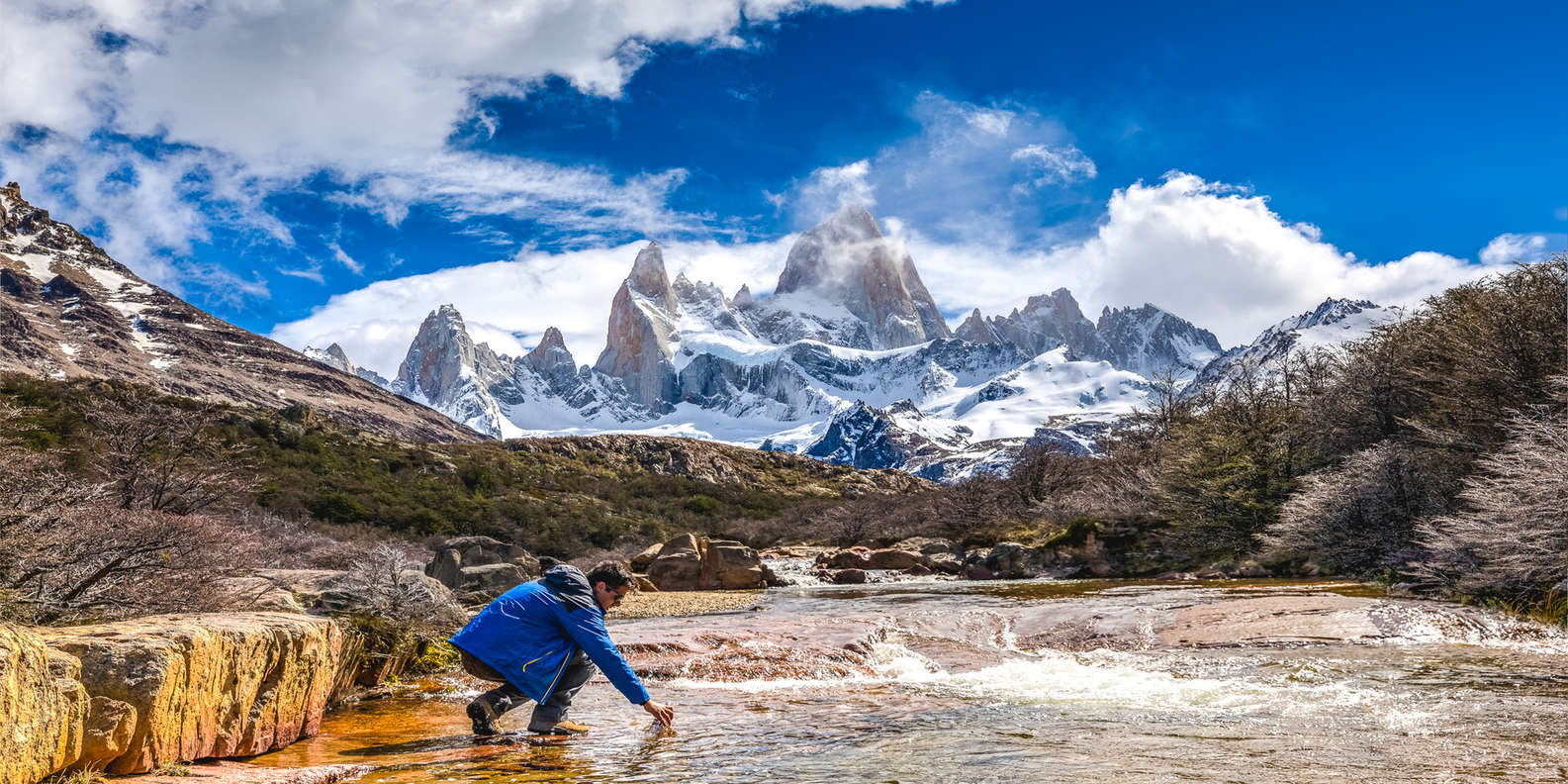
Another labor pattern that El Chaltén has witnessed is the capacity of ecotourism expansion to erode the market equality that once defined its laboring sector. Originally facing harsher ways of life, workers in the village relied on a classic narrative of laboring a pulmón, or to the lung (Mendoza, 75). Conditions were relatively consistent between workers, so market equality was the norm (Garibotti). However, as ecotourism expanded the viable economic opportunities in the region, the entrepreneurial class split in two; entrepreneurs identified either as comerciantes– those who owned one business– or empresarios– those who owned multiple. The power exhibited by the empresario stems from the capacity of their businesses to mutually support one another: “Manolo’s hostel, Estancia Verde, often has significant overflow because his bus company drops passengers right outside the front door” (Mendoza, 73). To combat the growing power of empresarios, comerciantes began to rely on an alternative system of market solidarity. They organized into a Cámara de Comercio to coordinate tourism development, protected their profit margins by relying on the system of informal employment, and created micro cartels, which fixed prices and eliminated competition (Mendoza, 77) . With the expansion of ecotourism in El Chaltén, both greed and the forces of capitalism helped define a new tiered working class (Garibotti). Market equality was branded as a false narrative and workers were forced to operate instead at the mercy of contrasting forces: market individualism and market solidarity.
From left to right: http://www.chimehuinsp.com/arroyo-verde-lodge.htm, https://ahoracalafate.com.ar/nota/8816/el-chalten-la-camara-de-comercio-no-integrara-el-consejo-asesor-de-turismo, https://www.diario7lagos.com.ar/la-asociacion-de-hoteles-y-la-camara-de-comercio-de-angostura-se-reunieron-con-representantes-de-la-embajada-de-brasil-y-banco-patagonia/
More About El Chaltén: Interview with Rolando Garibotti
Question: How has El Chaltén changed over time, as a result of ecotourism?
Transcript: “When I started coming here, there was only one house. In ’87, I came here to climb the first time, there was just one house. I mean, now there’s 1,300 people living here year round. I mean, in any day in the summer, there’s 4,000 people here. So all the roads got paved, and a really nice airport got built…”
Question: In El Chaltén, the division of labor is extremely visible. Golondrinas have a different role in ecotourism than do empresarios, and the capital-owning class is split as well. Where did this division come from?
Transcript: “And winters here were harsh, there was no natural gas, electricity was only for a few hours every day… So, initially everybody had to collaborate because life was actually quite hard. I mean, then once life started being easier and once certain people started being able to hire other people to do the work and to hire more and more employees, I mean, many of them got greedy, they started trying to pay as little as possible. So, I mean, it’s a classic tale of capitalism.”
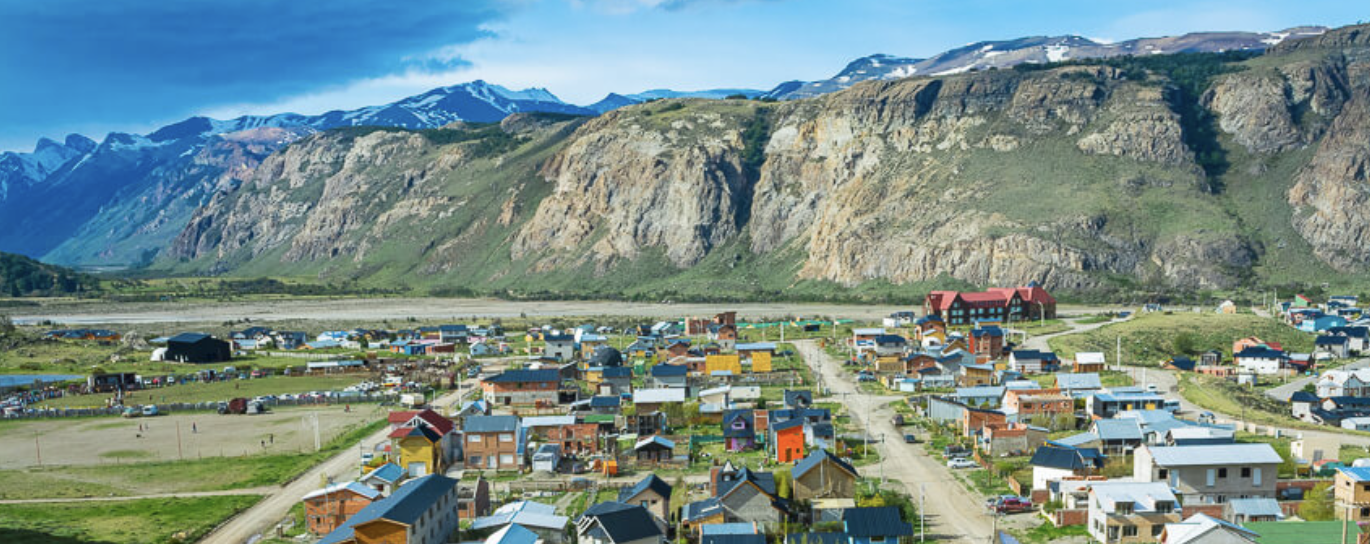
It is critical to contextualize the positions of El Chaltén’s divided classes, which suggest labor divisions across the broader ecotourism sector in Patagonia, within a larger civil framework. Every individual– regardless of golondrina or entrepreneurial status– works towards a mutual goal: the efficient branding of the village as a global ecotourism destination. Although some social classes possess a larger slice of local power, all are ultimately subject to the regulations of the National Park Service, which controls the real product of the region’s tourism: Los Glaciares National Park. The federal government possesses an unparalleled hand in decision-making. One example of this is a recent push for the development of additional trails in the park (Garibotti). Locals, organized through the Cámara de Comercio, assert that trail overcrowding may be mitigated by the expansion of travel routes through the park. Although they have upheld these assertions for years, there has been relatively little development. Thus, power disparities between locals, although real and divisive, must be considered while also recognizing a dominant federal force.
Below is an image gallery of other National Parks in Patagonia under federal control (citations from left to right).
Corcovado (https://www.patagoniachileadventures.com/sea-lakes-and-volcanoes-are-the-secrets-of-corcovado/), Parque Nacional de los Glaciares (https://www.lonelyplanet.com/argentina/patagonia/parque-nacional-los-glaciares-south), Pumalín (https://en.wikipedia.org/wiki/Pumal%C3%ADn_Park), Queulat (https://www.laidbacktrip.com/posts/hanging-glacier-queulat-national-park), Tierra del Fuego (https://explorewithlora.com/best-day-hikes-ushuaia/), and Torres del Paine (https://www.nationalgeographic.com/travel/destinations/south-america/chile/torres-del-paine-national-park-photos/)
More about National Influence over Ecotourism: Interview with Rolando Garibotti
Question: It seems contradictory that ecotourism, which is such an inherently local thing, is so heavily influenced by national control. What are the repercussions of this model? Who benefits?
Transcript: And I see it here. So, I’m talking to you from Chaltén, no– I’m in the little town of El Chaltén, where you were planning on coming. And I see it here in the living conditions of people. I mean, here, we have 3% of the population that really benefited from tourism because they are the operators of the big concessions. And then, everybody else is doing service jobs, most of them are not very qualified, so everybody else barely scrapes a living. I mean, so, yes, it brought a lot of wealth, there’s a lot more wealth here than many places in the country. But if the model had been sought through with a more social optic in mind, we would have had a much better result, so that’s my argument.
Question: We see a lot of federal control over Patagonian land, particularly involving towns like El Chaltén, which are located so close to national parks. Are there moments in which locals successfully opposed government decisions?
Transcript: At some point in time, the National Park Service wanted to charge an entry fee to come here to the town, no? The problem is that the town is already inside the park, so the National Park Service wanted to put a toll booth before you got to the town. And so the town went berserk, no? Because the town wanted the toll booths should be at the edge of the town once you enter the national park, but not in the section of national park that you can be a road, a driving road to get to the town.

In more expansive terms, however, both the labor force and the federal government that back any ecotourism destination work together to craft an ideal tourist experience. This experience, vicariously shared between visitors and non-visitors, is what permeates the global image of a tourist destination and ultimately attracts future profit. Note that tourists increasingly seek spaces in which they can interact with alternative cultures. Thus, service providers attempt to capture the endogenous potential of a region: its authenticity (Gale, 266). The nuance is that authenticity is sometimes lost in cultural translation. For example, colloquialisms may be misinterpreted; the Chilean phrase ‘pasa’, which is synonymous with ‘welcome’, is usually pronounced tersely, causing visitors to feel unwelcome when they hear it (Gale, 279). Here, the concept of negotiated authenticity comes into play, for service providers must find a balance between staging and cultural authenticity in order to maximize visitor experience (Gale, 278).
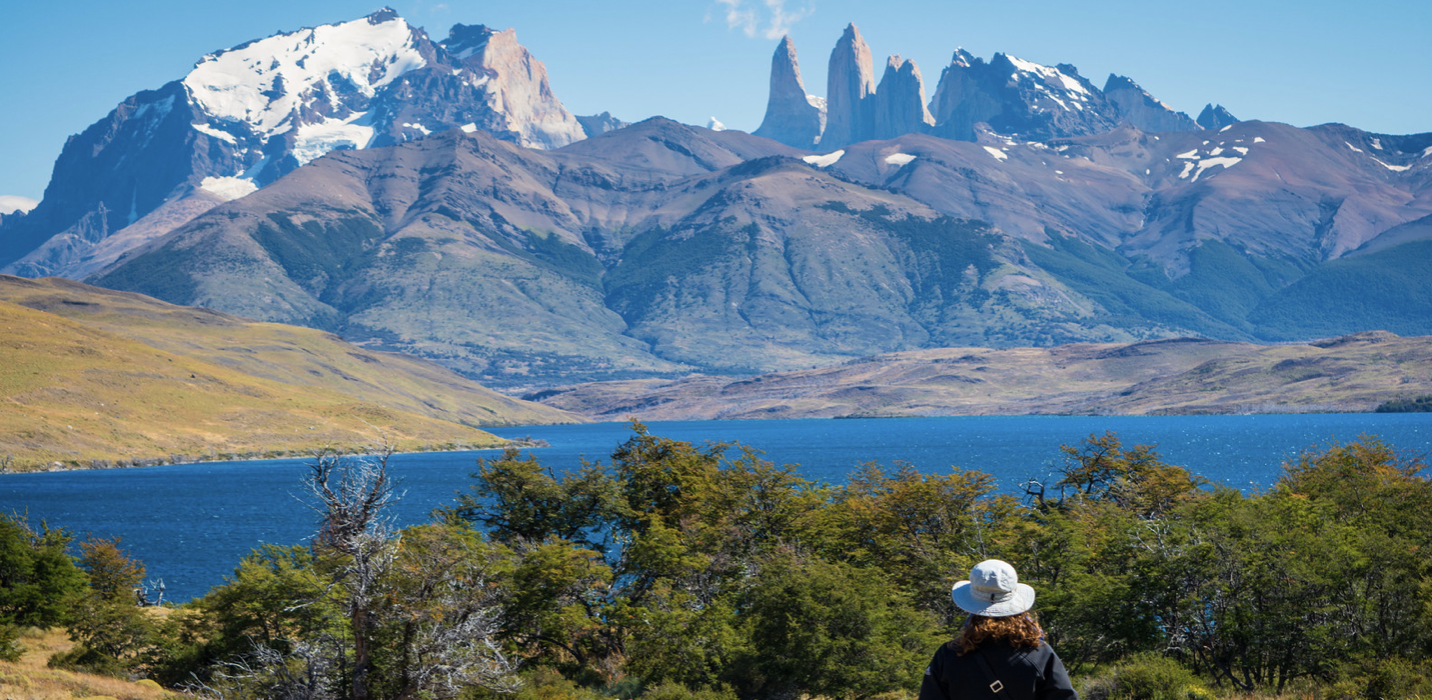
The following is an excerpt from an interview with Rolando Garibotti, in which he highlights on the role of authenticity in El Chaltén and the nearby town El Calafate.
Question: Would you argue that El Chaltén strives to provide tourists with an authentic experience?
Transcript: The problem is to define authenticity in relationship to what? So, we could define it in relationship to the frontier culture that we used to have, that used to rely on livestock. Or we could go further back and try to finally give some space or some respect to the first peoples, no? And honestly, neither of these two towns do we do either. I mean, there’s some areas in the periphery of these two towns that capitalize on the ‘old Patagonia’, and the ‘old Patagonia’ would be the ranching Patagonia, so the gaucho in his horse with his sheep. And they’ll take you to an estancia, which is a ranch, and you’ll stay in a ranch and you’ll go horseback riding, and so on. So there’s some of that but it’s very very very little.
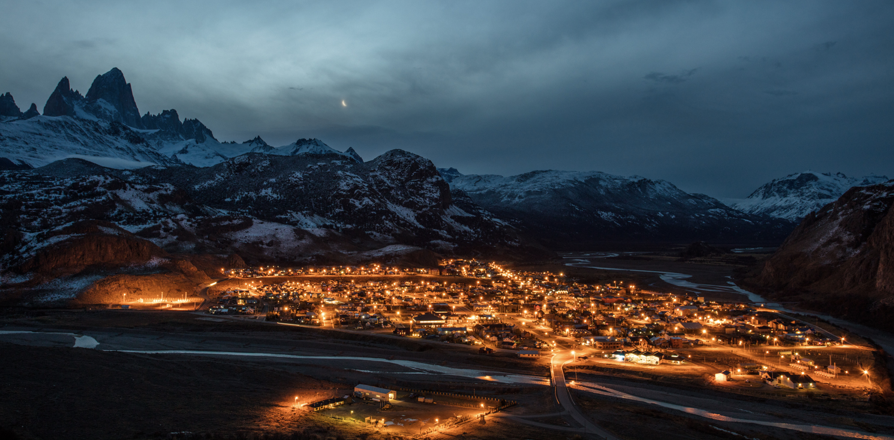
Societal forces backing tourism industries are ultimately consumed by a chase of an ideal, authentic tourist experience. But as we have seen, authenticity is not always achievable, and moreover not always desirable, for an ecotourism destination.
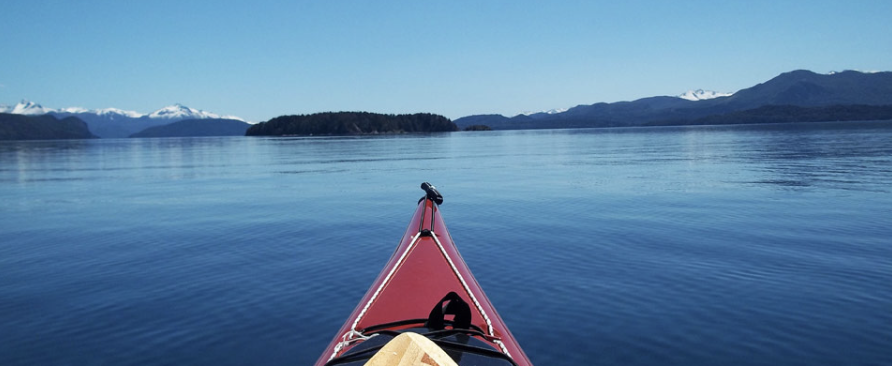
Patagonia should not be excluded from a modern discussion of ecotourism. For, upon close analysis, it exhibits a plethora of social patterns that speak to the sector as a whole. Potential tourists are faced with a plethora of ecotourism options while they are planning their trips, and must take financial limitations as well as personal interests into consideration; resultedly, providers of Patagonian ecotourism must consider the consumer perspective when crafting their experiences. In terms of labor, the workers who do the brunt of Patagonia’s ecotourism labor are seasonal migrant workers hailing from neighboring Mercosur countries. They must operate within a broader socioeconomic framework defined by international economic agreements, a large presence of informal labor, and various political administrations. More explicit descriptions of these laborers may be seen within a case study of El Chaltén, a village whose economy relies almost exclusively on ecotourism. Operating under the hood of the Kirchnerist agenda as well as capitalistic influence, El Chaltén’s labor system became tiered. It is critical to observe that, although some labor groups possess more social and economic standing than others, they all are limited by the authority of the federal government. Finally, everyone who staffs the ecotourism business– federal government included– works towards a common goal of creating an authentic tourist experience, which is what ultimately perpetuates the flow of tourists to Patagonia. In short, for the people who engage in it, Patagonian ecotourism is not simply about the environment. Rather, it is an exercise in balance: between national and migrant labor, labor-based and land-based citizenship, local and federal control, as well as authenticity and staging.
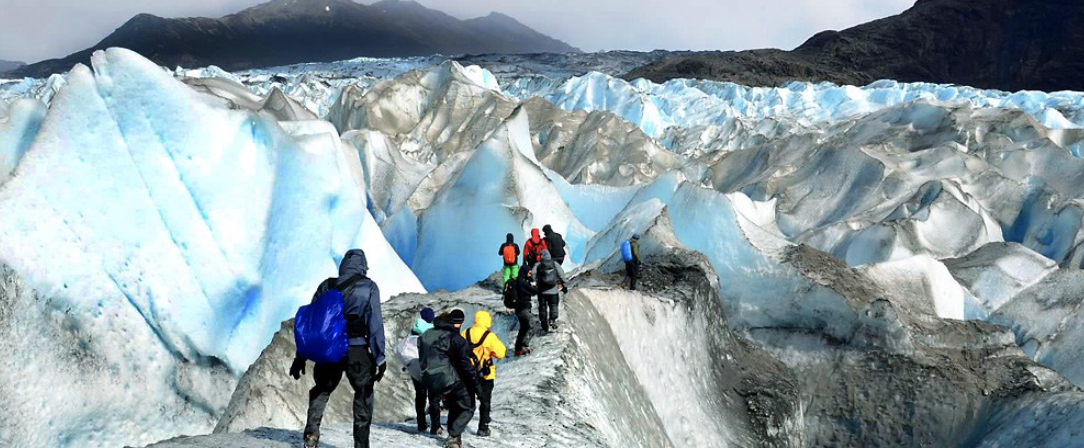
Additional Readings
Ballantyne, Roy, and Jan Packer. “Chapter 21: Staffing Ecotourism Businesses,” in International handbook on ecotourism, edited by Tom Baum, 264-272. Edward Elgar Publishing, 2013.
Gale, Trace, Keith Bosak, and Laura Caplins. “Moving beyond tourists’ concepts of authenticity: place-based tourism differentiation within rural zones of Chilean Patagonia.” Journal of Tourism and Cultural Change 11, no. 4 (2013): 264-286.
Garibotti, Rolando. Interview by Vassiliki Mancoridis. Email correspondence, April 2020. Garibotti, Rolando. Interview by Vassiliki Mancoridis. Audio interview, April 20, 2020. Loayza, Norman V. Labor regulations and the informal economy. No. 1335. The World Bank, 1994.
Los Glaciares Publishers. “About El Chaltén.” Accessed April 18, 2020. https://elchalten.com/eng/imagenes/index.php
Mendoza, Marcos. The Patagonian Sublime: The Green Economy and Post-Neoliberal Politics.
Organization of American States. International Migration in the Americas: Fourth Report of the Continuous Reporting System on International Migration in the Americas (SICREMI) 2017. Luis Almagro, Nestor Mendez, Mauricio Rands, and Betilde Muñoz-Pogossian. Washington D.C.: Organization of American States, 2017. https://reliefweb.int/report/world/international-migration-americas-sicremi-2017 (accessed April 9, 2020).
Parrado, Emilio A., and Marcela Cerrutti. “Labor migration between developing countries: The case of Paraguay and Argentina.” International Migration Review 37, no. 1 (2003): 101- 132.


